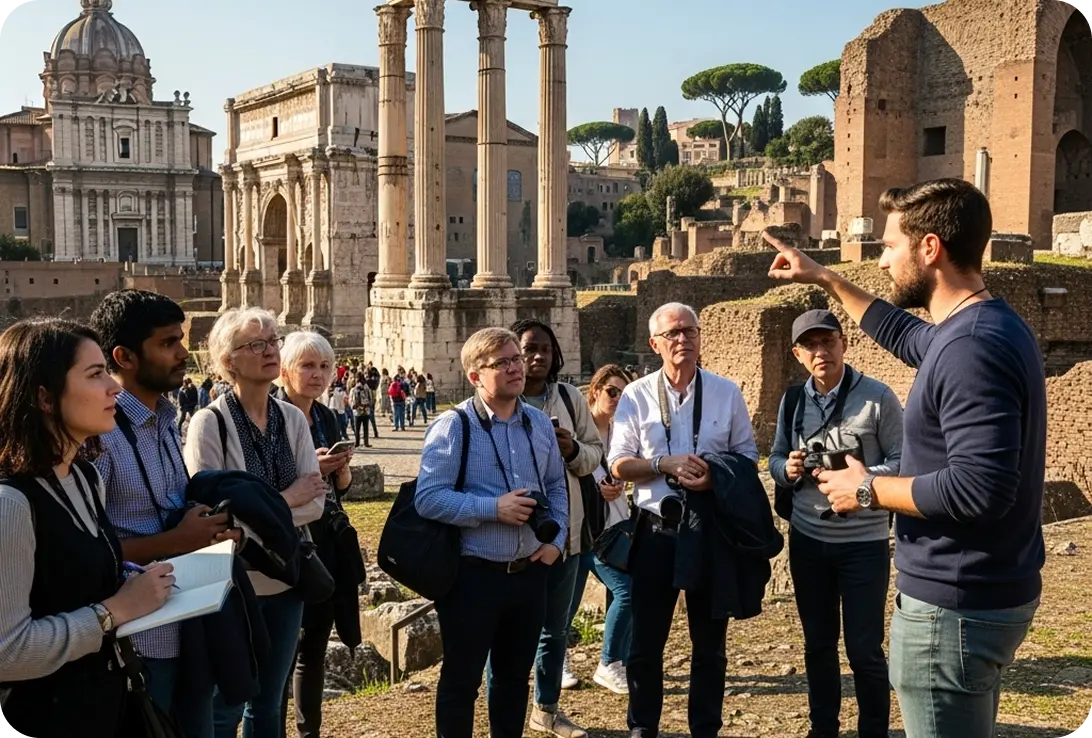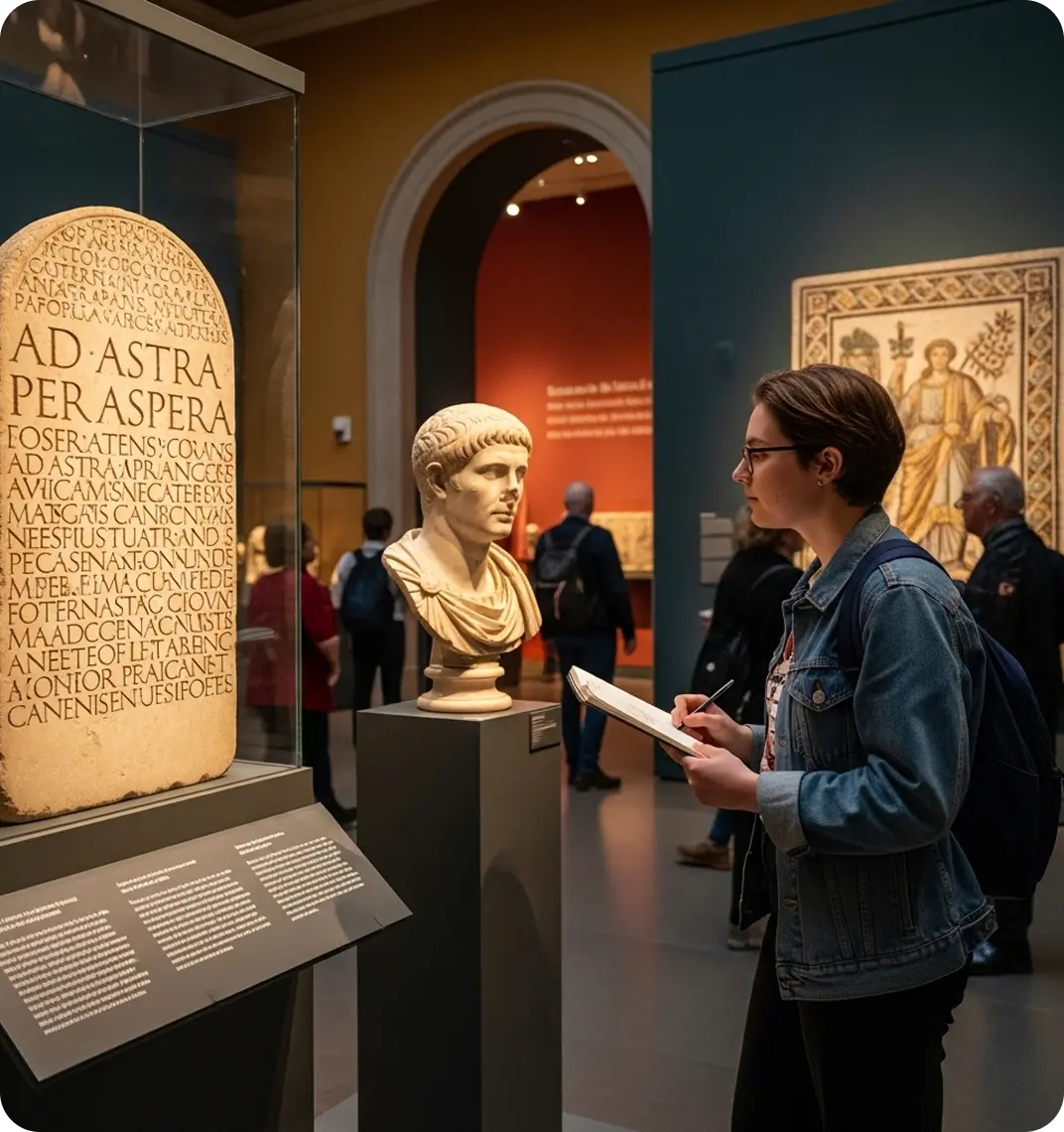Learn Latin with Rosetta Stone
See current dealsLatin is the foundation of many modern languages, from Spanish and French to Italian, Portuguese, and Romanian. It’s also the language of history, science, law, and the arts. Learning Latin gives you direct access to classical literature, ancient culture, and the roots of thousands of modern words.
Whether you’re studying for academics, to deepen your understanding of history, or to strengthen your knowledge of modern languages, Latin opens doors to a richer perspective of the world.
Why learn Latin?
Latin was spoken throughout the Roman Empire, and while it is no longer a “living” spoken language, its influence continues everywhere: in modern languages, medicine, science, religion, and law.
Whether you want to read Virgil in the original, decode Latin inscriptions on monuments, or improve your English vocabulary, Latin sharpens the mind and enriches your learning.
Top reasons to learn Latin
- Build a strong foundation: More than half of English words come from Latin roots.
- Understand modern languages: Learning Latin makes Romance languages easier to pick up.
- Explore history firsthand: Read ancient texts, inscriptions, and manuscripts in their original form.
- Boost academics: Latin helps with vocabulary for law, medicine, theology, and science.
- Train your mind: Latin develops problem-solving, memory, and logical thinking skills.
Latin language basics
Where was Latin spoken?
Latin was the language of Ancient Rome and its empire, spreading across Europe, North Africa, and parts of the Middle East. Over time, Latin evolved into the Romance languages: Spanish, French, Italian, Portuguese, and Romanian. “Ecclesiastical Latin” is still used in the Catholic Church today.
How long does it take to learn Latin?
It depends on your goals. Reading basic Latin can come quickly with consistent practice, while mastering grammar and translation takes longer. Short, daily study sessions (10–15 minutes) build steady progress — Rosetta Stone can get you started early and often.

Latin proficiency: from beginner to advanced
Beginner
Learn common Latin phrases: salve (hello), vale (goodbye)
Recognize simple noun cases and verb forms
Read short, simple sentences
Intermediate
Translate adapted passages from classical authors
Understand key grammar: all six cases, present and past tenses
Write short sentences and basic descriptions
Advanced
Read unadapted Latin literature — Cicero, Virgil, Ovid
Master complex verb forms and subordinate clauses
Translate poetry and prose with confidence
Core Latin skills
Pronunciation tips
Latin pronunciation depends on whether you use Classical Latin (ancient Rome) or Ecclesiastical Latin (church tradition). A few basics:
- V is pronounced like w in Classical Latin (via → “wia”), but like v in Ecclesiastical Latin.
- C is always hard in Classical Latin (caelum → “kai-loom”), but soft before e and i in Ecclesiastical Latin (caelum → “chay-loom”).
- Stress usually falls on the second-to-last syllable if it’s long; otherwise, on the third-to-last. For example, amīcus (friend) — stress on the second-to-last syllable: a-MI-cus.
Vocabulary and origins
Many Latin words live on in English and Romance languages. Examples:
- aqua → water (aquatic, aquarium)
- scribere → to write (scribe, describe)
- magnus → great (magnify, magnitude)

Useful phrases
- Salve – Hello
- Vale – Goodbye
- Quid agis? – How are you?
- Gratias tibi ago – Thank you
Latin grammar at a glance
Nouns and cases
Latin nouns change form depending on their function in the sentence (case). For example:
- puella (girl) → subject
- puellam → direct object
Verbs
Latin verbs are highly inflected, changing endings for person, number, tense, and mood. Example with amare (to love):
- amo — I love
- amas — you love
- amavit — he/she loved
- amabimus — we will love
Regional variations
While Latin itself is no longer evolving, two main pronunciation traditions exist:
- Classical Latin: Reconstructed pronunciation of Ancient Rome
- Ecclesiastical Latin: Pronunciation used in the Catholic Church, closer to modern Italian
Rosetta Stone primarily teaches Classical Latin for consistency but introduces both so learners can recognize them.
Best ways to learn Latin
- Online: Study anytime with Rosetta Stone on desktop or mobile. Sign up now!
- Classroom learning: Structured, academic-style instruction for grammar-heavy study.
- Private tutoring: 1-on-1 help to master translation skills. Browse Latin tutors on Wyzant, the nation’s largest network for tutors.
- Reading practice: Start with adapted Latin stories before tackling Cicero or Virgil.
- Immersion: Visit museums, monuments, and archives where Latin inscriptions and manuscripts are preserved.
Media and tools to support learning
- Books: Begin with Lingua Latina per se Illustrata or adapted Latin readers.
- Music & podcasts: Listen to Latin recitations or spoken-Latin podcasts.
- TV & films: Watch historical documentaries with Latin phrases or subtitles.
Learn Latin with Rosetta Stone
Rosetta Stone’s program makes Latin approachable and rewarding:
Real-world practice
Listen, repeat, and build confidence in reading and speaking.
Clear grammar support
Learn cases, declensions, and verb conjugations step by step.
Smart review
Spaced repetition reinforces vocabulary and forms.
Cultural insights
Explore Roman life, history, and influence alongside the language.

Take the first step
Rosetta Stone offers a free first lesson so you can start right away. Whether you’re learning Latin for school, personal enrichment, or to connect with history, Rosetta Stone will guide you every step of the way.
Get startedWhat’s included with your subscription
Achieve fluency faster with Rosetta Stone’s expert-designed Dynamic Immersion courses.
Perfect your accent with TruAccent speech recognition technology and sound like a native speaker.
Access to Rosetta Stone on web or mobile—learn anytime, anywhere!

